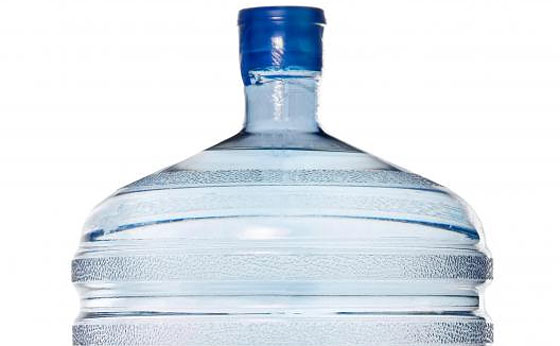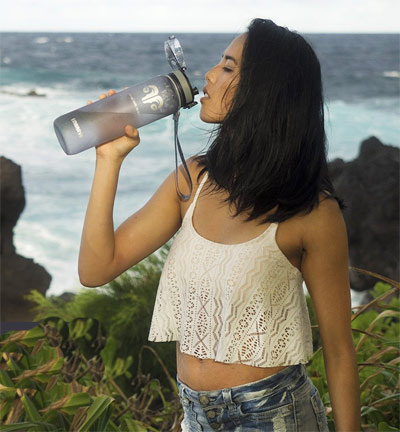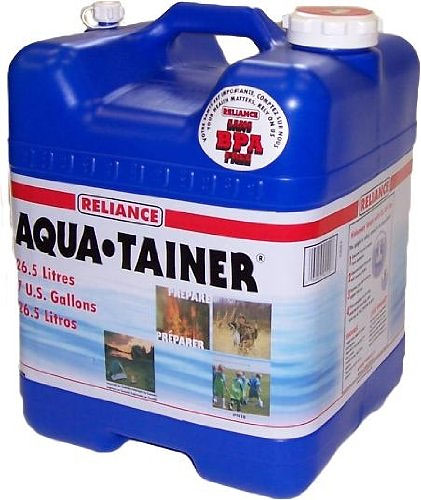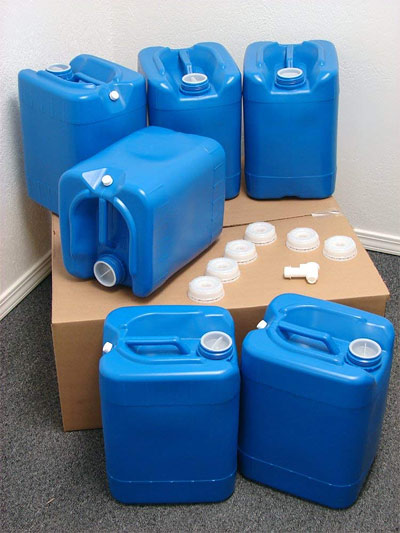Drinking Water Storage – How Long In Plastic Containers?

A lot of people are apparently concerned about the (health) effects of plastic as it pertains to drinking water storage (‘bottles’, jugs, containers, barrels, etc.).
I have spent time researching the general subject of various plastics versus their apparent safety for food and water. There is a-lot of opinion and passion about it.
Having said that, I have come to my own conclusions about how to best deal with it. That is, the possibility of ‘bad’ chemicals leaching into the water from the container which it’s stored.
( Jump to the short answer to this question )
100% free of BPA and bps:
>> BEST SPORTS WATER BOTTLE – Non-Toxic BPA Free
(view on amzn)
Not all plastic is created equal.
However there are certain plastics which are considered Food Safe (for water too).
Drinking Water Storage Plastics
Plastic generally considered safe for Food & Drink
Recycle Number:
#1 (PETE)
#2 (HDPE)
#4 (LDPE)
#5 (PP)
#1 PETE
Most plastic water ‘bottles’ (the kind you get in the 24-pack flats, etc.), and the plastic of soda and juice containers, are made from #1 PETE. They are apparently BPA-free nowadays (based on what I’ve discovered online about this subject).
#1 plastic water bottle containers are thinner than #2 plastic. In fact today’s #1 bottled water is even thinner than it used to be! They are basically designed for one use. That makes it less than ideal for long term water storage.
In addition, I’ve discovered that #1 containers will more readily leach a ‘plastic’ taste into the water if it’s heated up in any way – especially over time.
For example, if you leave a plastic water bottle in your hot car, then drink it after it has been sitting there for a time, chances are you will taste a bit of plastic. This can’t be good over the long term.
#2 HDPE
Most gallon jugs of water or milk, etc. that you see in the grocery store are made of #2 plastic and are Food Safe.
Blue colored water containers, jugs, and barrels that are specifically manufactured ‘Food Safe’ are made of #2 plastic. Not all ‘Food Safe’ water containers are blue, but many are (for quick identification).
#2 BPA-free Food Grade, Rugged Design, Refresh water 6 – 12 months
#2 Food Grade BPA-free, is my choice (if using plastic) for drinking water storage.
The thicker the better (resistance to scraping, damage, leaking). I use 55-gallon plastic drums for long term storage, but refresh the water once each year as a precaution. I also have a number of smaller potable water jugs ranging from 3 to 7 gallons each.
One drinking water storage container that I have is this one, #2 Food Safe:
>> AQUA-TAINER WATER JUG (7 GALLONS)
(view on amzn)
I reviewed it here: Portable Drinking Water Storage Container
My opinion is that if you’re storing water for long term, and if using plastic containers, you should use #2 HDPE food grade. I recommend that you drain and refresh your water every 6 – 12 months. The water should be stored in a cool place, out of the sun.
#4 LDPE
#4 plastic is used for things like plastic bags.
#5 PP
#5 plastic is used for things like Rubbermaid type food storage containers, etc.
The Bigger Picture
In the context of survival & preparedness, the potential issues from long term effects of plastic leaching (even though the plastic is considered food grade) is miniscule in comparison to the need for water itself!
You will not live long without any water at all – ~ 3 days (more or less).
How long will (the possibility) of plastic leaching take before it affects you? Maybe decades? Maybe never?
“Don’t sweat it.” Just store some water!
[ Read: Safe Plastics for Food & Drink ]
>> Samson Stackers – 30 GALLON WATER STORAGE
(view on amzn)
How Long Do 5 Gallon Water Jug Last?
It’s a common question. The last thing you want is your water storage to begin leaking all over the place!
I don’t have a specific answer other than it does matter how you store the water jug. More specifically, I would not store plastic water jugs filled with water – on a concrete floor. Scratching. Abrasion. Temperature difference between the concrete and room temperature.
Instead, consider a piece of plywood or anything to create a barrier in between.
However, read the next section:
Tip regarding plastic milk jugs
A comment about gallon plastic milk jugs for water storage:
Don’t use them!
I have experienced them leaking, and many others among the preparedness community have commented on it.
After awhile, they will probably begin to leak. They are fairly thin. They’re not designed to be reused. In fact some of them these days are designed to biodegrade more rapidly.
I’ve had success for years with some, but not always. It’s better to fork out the dough and buy some purpose made water storage containers.
